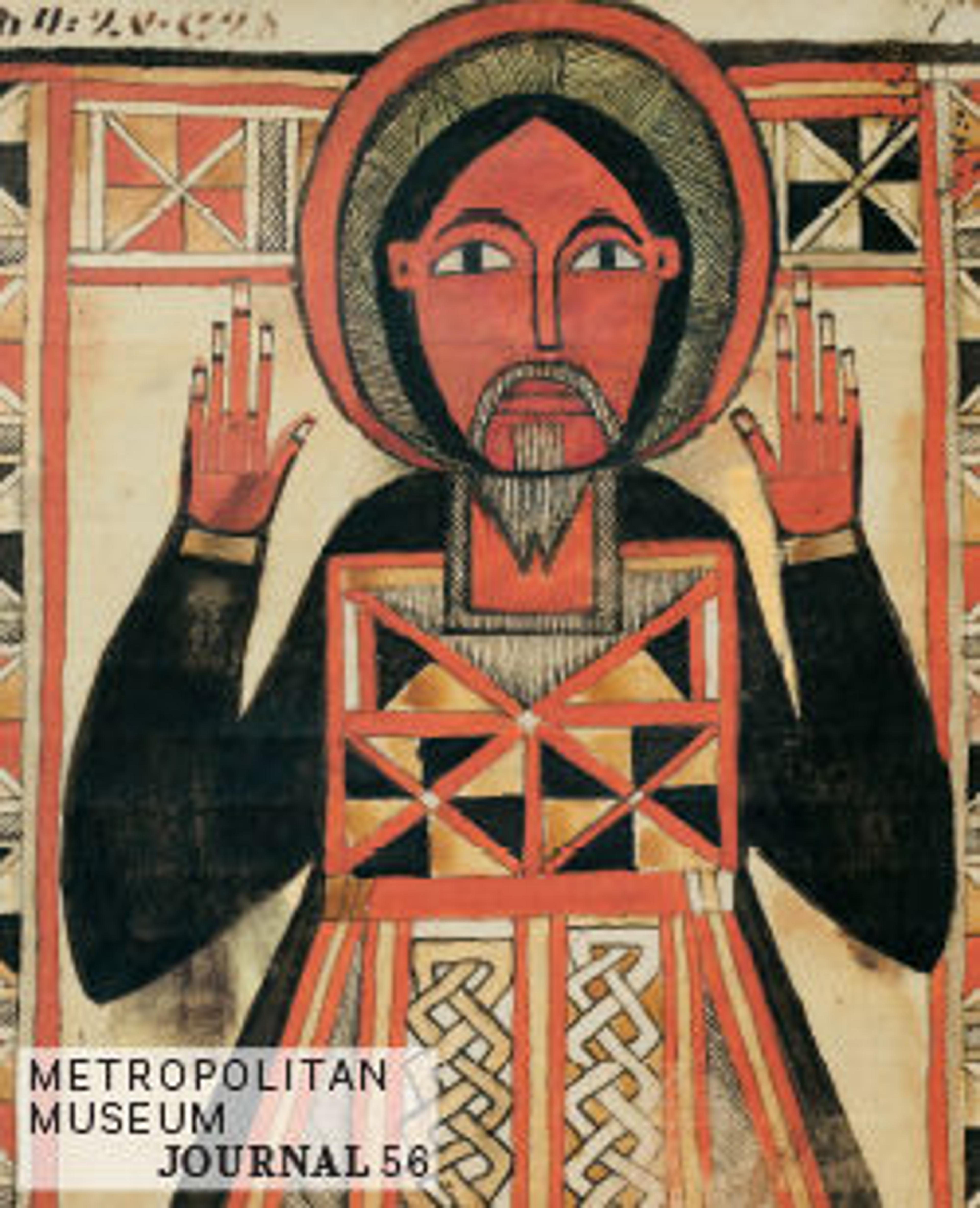Relief panel
This panel from the Northwest Palace at Nimrud (ancient Kalhu) depicts a winged supernatural figure. Such figures appear throughout the palace, sometimes flanking either the figure of the Assyrian king or a stylized "sacred tree." The reliefs were painted, but today almost none of the original pigment survives. However, the reliefs themselves retain incredible detail, including intricate incised designs on many of the figures’ clothing.
The figures are supernatural but do not represent any of the great gods. Rather, they are part of the vast supernatural population that for ancient Mesopotamians animated every aspect of the world. They appear as either eagle-headed or human-headed and wear a horned crown to indicate divinity. Both types of figure usually have wings. Because of their resemblance to groups of figurines buried under doorways for protection whose identities are known through ritual texts, it has been suggested that the figures in the palace reliefs represent the apkallu, wise sages from the distant past. This may indeed be one level of their symbolism, but protective figures of this kind are likely to have held multiple meanings and mythological connections.
Figures such as these continued to be depicted in later Assyrian palaces, though less frequently. Only in the Northwest Palace do they form such a dominant feature of the relief program.
Donated in 1884, this was the earliest Assyrian relief to enter the Museum’s collection. Originally part of a much larger panel, it shows the head, shoulder, and part of the wing of a human-headed figure facing left. The horned cap indicates divinity, and the long, elaborate beard is similar to that of the Assyrian king. The figure wears a large pendant earring and a collar comprising two bands of beads with spacers. The right side of the panel preserves the edge of another wing, showing that this figure was originally arranged back to back with another, also in the Metropolitan Museum (17.190.2082).
The figures are supernatural but do not represent any of the great gods. Rather, they are part of the vast supernatural population that for ancient Mesopotamians animated every aspect of the world. They appear as either eagle-headed or human-headed and wear a horned crown to indicate divinity. Both types of figure usually have wings. Because of their resemblance to groups of figurines buried under doorways for protection whose identities are known through ritual texts, it has been suggested that the figures in the palace reliefs represent the apkallu, wise sages from the distant past. This may indeed be one level of their symbolism, but protective figures of this kind are likely to have held multiple meanings and mythological connections.
Figures such as these continued to be depicted in later Assyrian palaces, though less frequently. Only in the Northwest Palace do they form such a dominant feature of the relief program.
Donated in 1884, this was the earliest Assyrian relief to enter the Museum’s collection. Originally part of a much larger panel, it shows the head, shoulder, and part of the wing of a human-headed figure facing left. The horned cap indicates divinity, and the long, elaborate beard is similar to that of the Assyrian king. The figure wears a large pendant earring and a collar comprising two bands of beads with spacers. The right side of the panel preserves the edge of another wing, showing that this figure was originally arranged back to back with another, also in the Metropolitan Museum (17.190.2082).
Artwork Details
- Title:Relief panel
- Period:Neo-Assyrian
- Date:ca. 883–859 BCE
- Geography:Mesopotamia, Nimrud (ancient Kalhu)
- Culture:Assyrian
- Medium:Gypsum alabaster
- Dimensions:25 1/4 x 31 1/2 x 3 in., 140lb. (64.1 x 80 x 7.6 cm, 63.5kg)
- Credit Line:Gift of Benjamin Brewster, 1884
- Object Number:84.11
- Curatorial Department: Ancient West Asian Art
More Artwork
Research Resources
The Met provides unparalleled resources for research and welcomes an international community of students and scholars. The Met's Open Access API is where creators and researchers can connect to the The Met collection. Open Access data and public domain images are available for unrestricted commercial and noncommercial use without permission or fee.
To request images under copyright and other restrictions, please use this Image Request form.
Feedback
We continue to research and examine historical and cultural context for objects in The Met collection. If you have comments or questions about this object record, please contact us using the form below. The Museum looks forward to receiving your comments.
